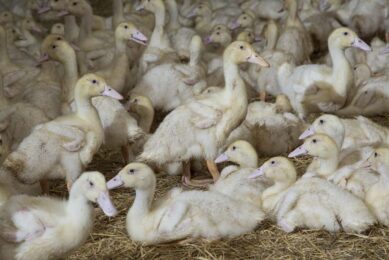Bird flu in wild birds falling: EU

Surveillance of wild birds in the EU shows that cases of avian influenza are falling, according to the European Commission.
A survey of wild birds, published from data collected by the EU’s designated community reference laboratory in the UK, was carried out over 10 months.
The survey found that between February 2006 and 21 May 2006, 741 cases of highly pathogenic avian influenza were detected in wild birds in 13 member states – Greece, Italy, Slovenia, Hungary, Austria, Germany, France, Slovakia, Sweden, Poland, Denmark, Czech Republic and UK.
The peak was reached in March with 362 cases, declining to 162 in April and 17 in May. The most commonly affected wild birds have been swans, followed by ducks, geese, birds of prey and others.
There have been four outbreaks of H5N1 avian influenza in poultry in the EU, and all of these were quickly eradicated following detection. No human case of the H5N1 virus has occurred in the EU.
In response to the growing spread of H5N1 from South-East Asia in 2005, the EU intensified its surveillance and early detection programmes, both for wild birds and poultry.
The spread of the virus in domestic poultry in Europe has heightened public fears about eating chicken. As previously reported, consumption of poultry meat has dropped by more than half in some EU states, with 300,000 tonnes and more in storage across the bloc.
Meanwhile, Hungarian authorities have informed the European Commission of a confirmed outbreak of avian influenza in a domestic flock of geese in Bács-Kiskun, in the south of the country.
Samples will be sent to the reference lab in the UK to determine whether the outbreak is the H5N1 strain. The Hungarian authorities are applying the necessary disease control measures.
If confirmed as an outbreak of H5N1, this would constitute the fifth outbreak of high pathogenic H5N1 avian influenza in domestic poultry in an EU member state.
Bird flu has killed 64% of people known to be infected with the virus this year, with were 217 cases of infection and 123 deaths worldwide, according to World Health Organisation statistics.
Some scientists are concerned that the H5N1 form of the virus may mutate into a strain that can be transmitted between humans, starting a pandemic.
Join 31,000+ subscribers
Subscribe to our newsletter to stay updated about all the need-to-know content in the poultry sector, three times a week. Beheer
Beheer








 WP Admin
WP Admin  Bewerk bericht
Bewerk bericht